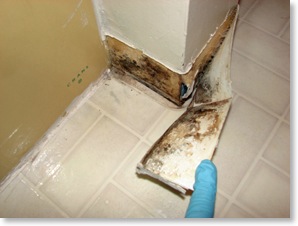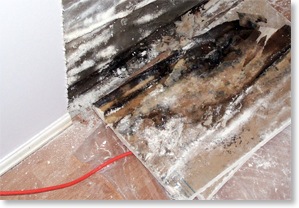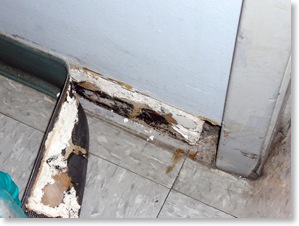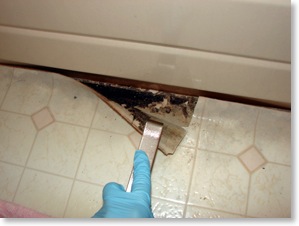Frequently Asked Questions about Mould Inspections
- Mould Inspections - what can I expect to see during a mould inspection ? [+]

Initially, a walk through evaluation of the property is done to identify potential sources of mould / fungal amplification. This includes an indoor and outdoor inspection of the house, investigation of the crawlspace, attic, garage and basement. A thorough inspection of the HVAC system and filters. Areas of concern are photographed and documented.
Then the inspector will take a series samples from areas of concern, this includes bulk swabs and tape lifts and air samples, if required. Outside samples are taken for comparative testing. The bulk tapes samples are examined on-site with a microscope, or expedited to our head office, to determine if the mould has extended beyond areas that are visible and if invasive testing of any area is required. - What is the mould inspector looking for? [+]
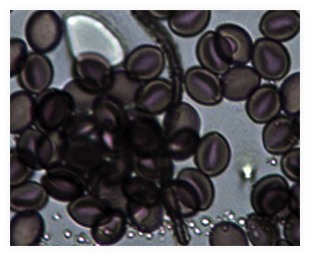
Mould needs a source of moisture or humidity, a source of food or nutrients, and proper temperature to grow. Because mould grows well at room temperature, control is achieved through adequate control of moisture or humidity in the house. Our inspections find areas which have poor humidity control, excess condensation or water intrusion. We are also identifying areas with visible fungal growth, high mould spore counts, water damage, excess organic matter such as dust or dander, poor ventilation, and inadequate air filtration. - What type of equipment can I expect the mould inspector to bring for a thorough mould inspection? [+]
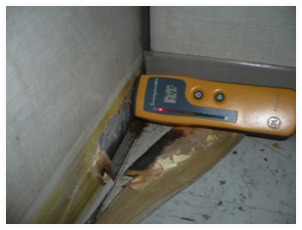
- Digital Microscope - for immediate confirmation of suspected contamination
- Digital camera - full documentation of inspection
- Air sampling equipment - to test for interior and exterior mould spore counts
- Laser Particulate Counter
- Bulk Tape sampling supplies - to confirm, using microscopy, areas of spore amplification, especially in areas where visual confirmation is not practical or accessible
- Bulk Swabs - for petri dish cultivation
- Lighting equipment
- Moisture meter- to identify wet or problematic areas, on the surface and behind walls - we include a full moisture survey in the mould consultation report
- Relative Humidity monitors / thermometers- to assess humidity levels and temperature in various areas of the house, to measure HVAC and ventilation efficiency
- Full personal protective equipment (PPE) - full and half face masks-respirators, gloves, protective clothing, goggles (OSHA standards)
- Equipment for invasive inspections - to remove small sections of drywall ( not required for every mould inspection).
- How long does a mould inspection take ? [+]
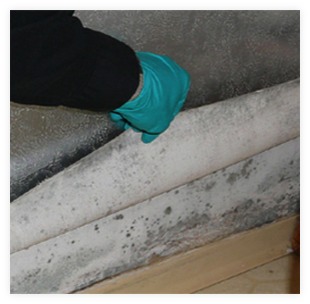
Depending on the size of the house and how visible and accessible the areas of mould contamination are, the inspection could take 3 to 5 hours on an average 2 story home with a crawl space. If mould is suspected to be behind a wall, for example, then some invasive testing would be required, this may take longer. - What happens during the mould inspection, does the inspector clean the mould ? [+]
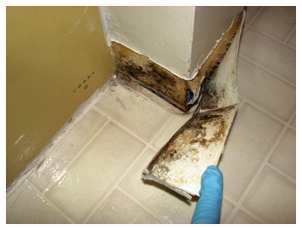
No, the inspector will not clean the mould at the time of the inspection. The inspector will answer all of your questions about the mould contamination that was found, show you the area or areas that are the most likely source of the amplification, areas that have high mould spore counts and other potential mould causing sites.
The mould inspector will identify for you any areas that have had water intrusion or high relative humidity or heavy condensation, as these areas may require repair or maintenance for moisture intrusion as part of the remediation process. The inspector will discuss the methods, products and protocols required to adequately clean and remove the mould from the property.
We will then provide you with a full written report of the inspection, and the scope of work, i.e..step by step - the products, materials and procedures and safety protocols that should be followed by a remediation company to clean and remove the mould. A list of areas that require repair or maintenance will also be included. We will also include a quotation for the cost of remediation of the mould. - Why do I need a scope of work? [+]
- How can your company give a cost estimate for mould remediation and other mould inspection companies don't? [+]
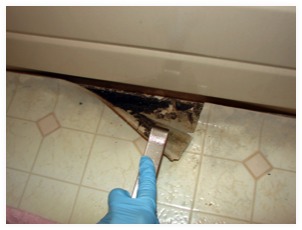
The scope of work gives the remediation company a full and complete set of instructions for the work that is required to clean the mould. It explains in detail, the procedures, processes and safety protocols that should be used for your individual mould problem. It insures that you get the best results. It also allows you to give that same set of instructions to several remediation companies to get competitive quotes.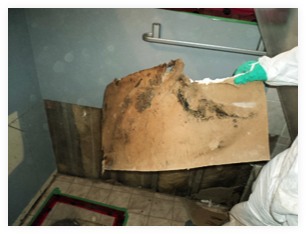
We offer a full service for our customers. We can take you through from inspection to consultancy to mould remediation. All of our inspection reports are reviewed by a panel of engineers and scientists to ensure that our scope of work and cost estimates are appropriate and accurate. Our company believes that having mould inspectors that have solid remediation experience is of added value to the consumer. They know first hand what is required to do a thorough remediation job, and tend not to underestimate or overestimate the hours or complexity of the job. Our inspectors are capable of calculating a job accurately, so you, the customer, are not surprised by additional costs at the end of a job. - What is the purpose of mould inspection report ? [+]
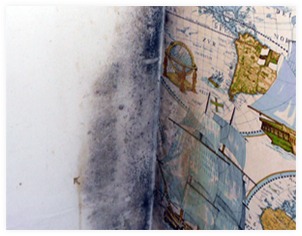
The mould inspection report is a means of protecting the home-owner, by providing information about their particular situation and mould and moisture intrusion problem/s. It determines the risk to health and property.
The scope of work, is the most important section of the mould inspection report, detailing for you exactly what measures have to be take to remedy the situation. This comprehensive 12 - 20 page document will allow you to make a more confident decisions about the next steps in mould remediation. - What if I am in the process of purchasing a property that has mould? [+]
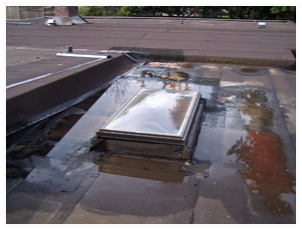
If you are in the process of buying or selling the property the mould inspection report can be used in the negotiations to establish an equitable value to repair the property. As we include a full quotation for the remediation of the property with the inspection report, you can immediately ascertain the total cost of the repairs required to get the house back to a standard that is acceptable for both the buyer and the seller. As most mould problems can now be remediated without major deconstruction to the house, it is more feasible to purchase a mould contaminated house and to have it fully cleaned, remediated and guaranteed.
- If I have already had a mould inspection company take an Air Sample with a lab report, do I still need a scope of work ? [+]
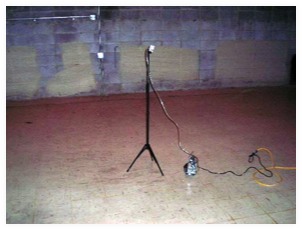
Professional and experienced mould inspection companies will provide you with a complete Scope of Work, as a part of their service. It they have not, then a mould remediation assessment will be required, in order to produce the Scope of Work. A lab report alone for an air-sample test does not provide the information required for a mould remediation company to accurately quote on a job.
Once contracted to do a mould remediation job, Eco-Impact and Mould Experts, will conduct a separate mould inspection, regardless of whether or not a previous inspection of the property had been done. We do this, in every instance, to ensure that our remediation and quality control procedures are strictly followed.
We do recommend that a 3rd party certification is done, after the remediation has been completed.
As mould detection is often problematic with areas often overlooked, or it may have been several weeks from the time of the initial inspection and given the right conditions, the mould will continue to grow and spread during that period. Our systematic test methods gives us the confidence in knowing that a complete inspection has been conducted. With possible areas of omission reduced, it insures that we will have the greatest probability of success - even in areas where the mould is not readily accessible or visible. - How much will a mould remediation cost ? [+]
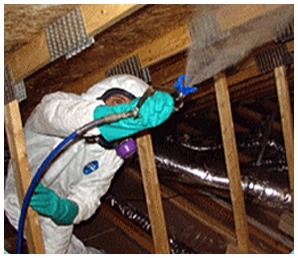
As there are so many variables involved in mould remediation, this cost can only be determined at the time of the mould inspection. Mould remediation can also include the cost of repairing water damaged materials, fixing leaks, removing fiber glass insulation, cleaning carpets as well as cleaning, abatement and preventative treatments.
Our company charges a standard daily rate for remediation, what will vary is the amount of time required to full clean and repair a property.
More information on mould remediation and mould abatement. - Once we have found the source of the mould, can we clean the mould ourselves? [+]
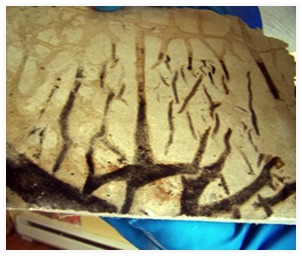
In all cases, physically disturbing the mould will cause the spores to spread, and this could inadvertently contaminate areas that currently have no mould amplification. In some cases, household cleaners can make the mould problem worse. We strongly recommend that caution be used in all instances. Read the EPA guideline for DIY projects.
Some moulds are capable of producing carcinogens (e.g., aflatoxin produced by Aspergillus flavus). The spores may be toxic by inhalation (e.g., satratoxin H in the case of Stachybotrys chartarum (atra). The antigenic material produced by a mould of a particular genus will vary according to species or a strain within the species and can vary with the source of nutrition available for the organism.
As per the EPA guidelines, we recommend individuals untrained in bio-containment abatement procedures do not attempt to perform remediation on moulds with an aggregate area of contamination of 10 square feet or more. (regardless of the type), or on those moulds, (regardless of area), which are considered to be toxic or pathogenic.
If the mould problem is more than 10 square feet or if you've tried cleaning it yourself and the odour persists or if it comes back in a few days, you need professional consultation.
See our page on DIY mould remediation before you consider any mould cleaning project.
- I am currently renting an apartment, would I need a full mould inspection and scope of work? [+]
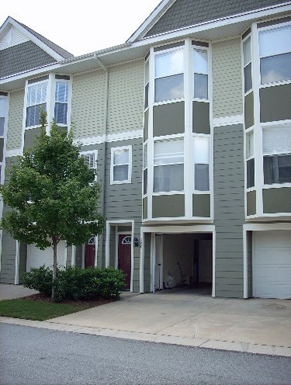
If you are renting, you are most likely not responsible for any repairs to the building. This is falls under the responsibilities of the building owner. However, you, as a tenant, may require evidence that mould is present within your rental unit. You may also require consultation on how to proceed with having the mould addressed and on how to care for you personal possession that are in the apartment. This would require a full mould inspection - How do we make an appointment for a mould inspection ? [+]
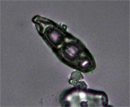
For the Vancouver, B.C. area - Call for an appointment.
Office hours: Monday to Friday 9AM - 7PM
Telephone: (778) 786-1552 or 604-628-7224
Please note that inspections are best conducted in daylight hours. - What areas do you service? [+]
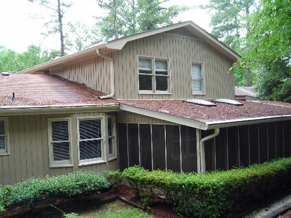
We service the following areas:
The Greater Vancouver area, The Lower Mainland, Fraser Valley, Sea-to-sky
Abbotsford, Burnaby, Chilliwack, Coquitlam, Deep Cove, Delta, Hope, Langley, Maple Ridge, Mission, North Vancouver, Pemberton, Richmond, Squamish, Surrey, Sunshine Coast, Vancouver, West Vancouver, White Rock, Whistler .


